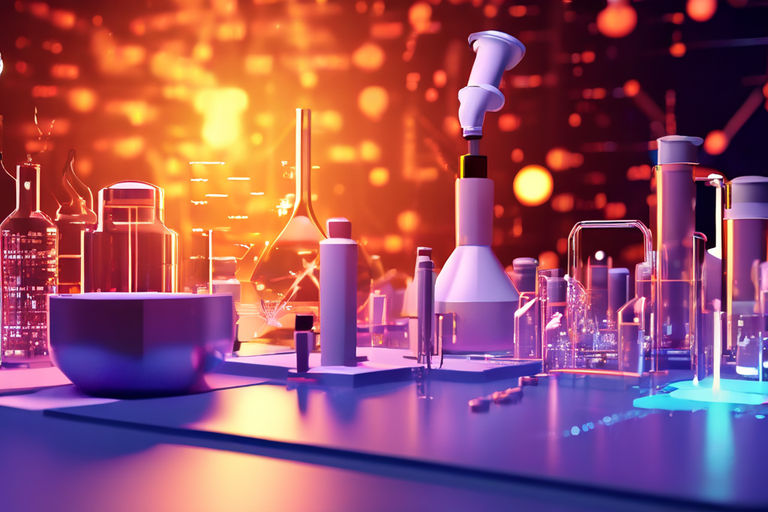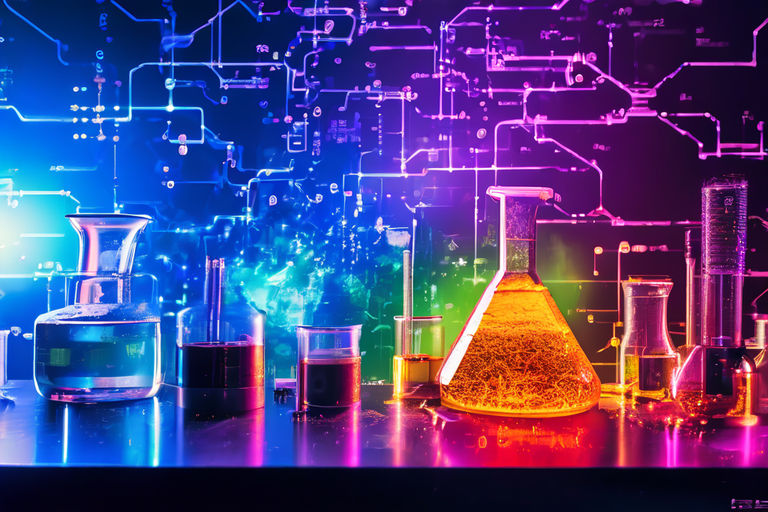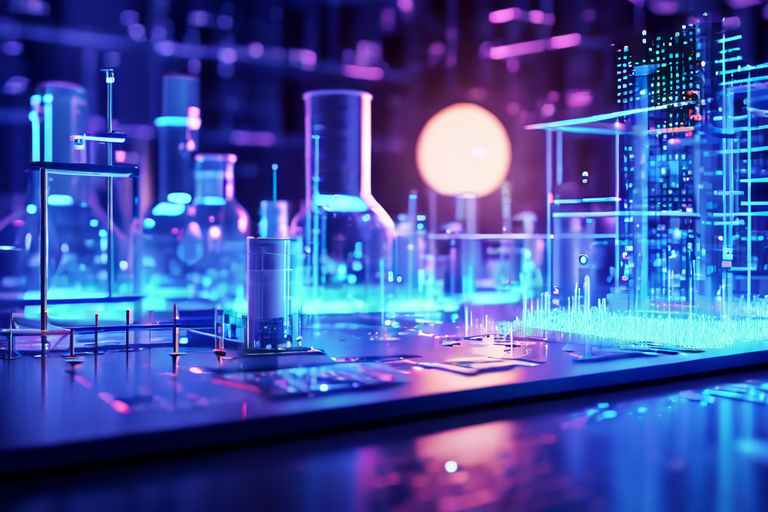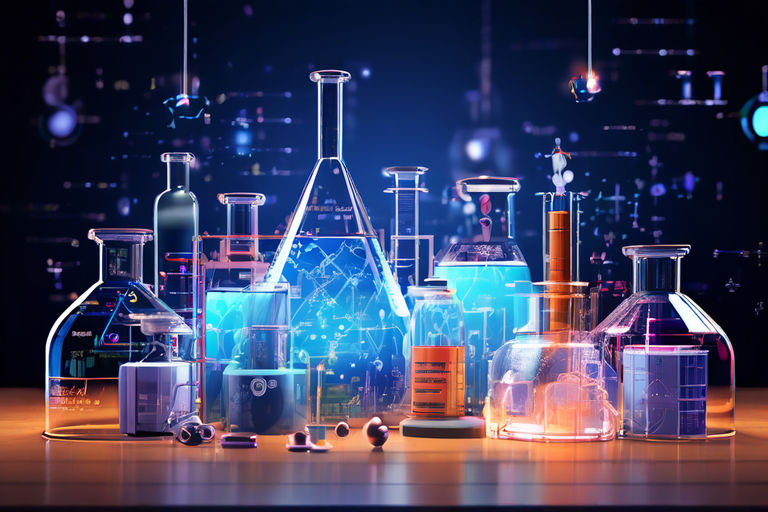- Introduction
- The Essence of AI in Chemistry
- Automation: Freeing the mind from tedious tasks
- Predicting Molecular Structure: A Quantum Leap
- Increasing Analytical Accuracy: From Data to Insights
- Redefining experimental design: A collaborative dance
- A New Dimension in Chemistry: The Legacy of AI
- AI-Driven Drug Discovery
- Power of AI in compound recognition
- Predictive Modeling: Predicting Success
- Target Identification and Validation: A Strategic Approach
- Accelerated Iterative Design: From Lab to Market
- Collaboration of Minds: AI and Human Expertise
- Smart Laboratories: AI's Impact
- Robotic Lab Assistant: Perfect Personality
- Predictive analytics: Anticipating scientific results
- Real-time data analysis: Accelerate insights
- Automated workflow optimization: streamlining processes
- Human-AI Collaboration: Fostering Scientific Innovation
- Analyzing Molecular Structures
- Challenges and Ethical Considerations
- Future Prospects: What Lies Ahead?
- FAQs
Introduction
Enter the fascinating realm where artificial intelligence meets chemistry. Discover how these two cutting-edge fields come together to revolutionize research, analytics and innovation.
The Essence of AI in Chemistry
Decoding Complexity: Transforming AI’s Chemical Practice
Embark on a journey with us as we unravel the intricate web of possibilities woven by artificial intelligence, reshaping the landscape of traditional chemical practice. Explore how AI, like a visionary architect, not only automates tedious tasks but also ventures into predicting molecular structures, ushering in a new dimension to the ever-evolving chemical landscape.

Automation: Freeing the mind from tedious tasks
One of the most important contributions of AI to chemistry is the automation of laborious tasks that once consumed valuable time and resources. From data analysis to routine experiments, AI-powered systems take the reins, freeing researchers from the shackles of repetitive tasks. These newfound skills allow scientists to redirect their focus toward creativity and innovation, marking a paradigm shift in how chemistry is conducted.
Predicting Molecular Structure: A Quantum Leap
Witness a breakthrough as AI ventures into molecular structure prediction, a task traditionally reserved for the keen eye of chemists. Machine learning algorithms, armed with abundant training data, decipher complex patterns within molecular compositions. The result? Ability to predict molecular structures with an accuracy that exceeds conventional methods. This not only accelerates research but also opens the door to previously undiscovered compounds and materials.
Increasing Analytical Accuracy: From Data to Insights
The impact of AI extends beyond automation and prediction, entering the realm of analytical precision. By carefully analyzing vast datasets, AI systems detect subtle trends and correlations that may escape human observation. This superior analytical efficiency increases the accuracy of chemical analysis, giving researchers deeper insight into the properties and behavior of substances.
Redefining experimental design: A collaborative dance
The integration of AI into chemical practice transforms the nature of experimental design. As a collaborative partner, AI suggests optimal conditions, leading researchers to experiments with higher success rates. This dynamic interaction between human intuition and AI’s analytical capabilities creates a synergy that transcends individual capabilities, driving innovation and discovery to new heights.
A New Dimension in Chemistry: The Legacy of AI
In conclusion, AI stands as a catalyst for a renaissance in chemistry, adding a new dimension that expands the boundaries of what was once thought possible. The fusion of automation, predictive modeling and analytical precision paints a picture of a future where chemical practices are enhanced by the intelligent assistance of machines. As we navigate this transformative journey, AI will leave an indelible legacy in the history of chemistry, forever changing the way we perceive, analyze and innovate in the fascinating world of chemicals and compounds.
AI-Driven Drug Discovery
Unleashing a Revolution: AI’s Impact on Drug Discovery
Embark on a transformative journey through the realms of drug discovery, where artificial intelligence emerges as the catalyst for revolutionary advances. Join us as we explore the complex ways in which AI accelerates the identification of potential compounds, taking the development of life-saving drugs to unprecedented heights.
Power of AI in compound recognition
In the search for new drugs, AI stands as a powerful ally, transforming the traditionally labor-intensive process of identifying potential compounds. Machine learning algorithms, powered by massive datasets, analyze complex patterns and correlations, quickly narrowing the chemical landscape to uncover promising candidates. This efficiency not only accelerates the discovery step but also increases the accuracy of compound selection.

Predictive Modeling: Predicting Success
At the heart of AI’s impact is predictive modeling, a game-changer in drug discovery. Imagine a tool capable of predicting the efficacy and safety of a potential compound before it undergoes extensive testing. AI-powered predictive analytics make this vision a reality, simplifying decision-making processes and significantly reducing time and resources invested in less promising ways.
Target Identification and Validation: A Strategic Approach
AI’s expertise extends to drug target identification and validation, a critical juncture in the drug discovery pipeline. By analyzing biological data, AI algorithms identify potential targets with unparalleled accuracy, enabling researchers to focus their efforts on pathways with the highest therapeutic potential. This strategic approach ensures a more efficient and targeted drug development process.
Accelerated Iterative Design: From Lab to Market
The iterative design process, central to drug development, experiences a paradigm shift with the inclusion of AI. The algorithm continuously learns from experimental results, guiding researchers to optimal molecular structures and formulations. It accelerates the design phase, moving potential drugs from laboratory discovery to market readiness with unprecedented speed.
Collaboration of Minds: AI and Human Expertise
Importantly, the impact of AI in drug discovery is not to replace human expertise but to augment it. The synergy between AI algorithms and human researchers creates a powerhouse of innovation, where machine analytical skills are matched with human intuition and creativity. This collaborative approach points to a future where breakthrough medicines are born from the seamless integration of technology and human expertise.
As we navigate through the revolutionary landscape of drug discovery, AI emerges as a beacon of hope, driving us towards faster, more efficient and targeted development of life-saving medicines. Join us on this journey where the marriage of artificial intelligence and pharmaceutical science reshapes the trajectory of healthcare, promising a brighter and healthier future for all.
Smart Laboratories: AI’s Impact
Unveiling Intelligent Evolution: AI in the Laboratory
Embark on a journey where science and technology converge, reshaping the chemistry laboratory landscape through the seamless integration of artificial intelligence. Witness the metamorphosis as AI becomes a steadfast companion in the laboratory, increasing both efficiency and accuracy. From the introduction of robotic lab assistants to the implementation of predictive analytics, chemistry labs are undergoing intelligent evolution.
Robotic Lab Assistant: Perfect Personality
Step into the future of laboratories, where robotic assistants, guided by AI algorithms, redefine precision in testing. These mechanical marvels perform tasks tirelessly, from precise measurements to repetitive processes, reducing human error and freeing researchers to focus on the creative aspects of their work. The result? Unprecedented efficiency and reproducibility in testing.
Predictive analytics: Anticipating scientific results
The entry of AI into the chemistry lab ushers in a paradigm shift with the adoption of predictive analytics. Imagine a world where algorithms analyze vast datasets, predicting possible test results before revealing them This not only speeds up research timelines but empowers scientists to make precise decisions, leading experiments to success with higher certainty.
Real-time data analysis: Accelerate insights
The integration of AI brings real-time data analysis capabilities, revolutionizing the speed at which insights are gained. No longer limited to post-test analysis, AI algorithms process data on the fly, providing instant feedback. This agile approach enables researchers to adapt their strategies immediately, increasing agility in the pursuit of knowledge.
Automated workflow optimization: streamlining processes
AI’s intelligence extends to laboratory workflow optimization. Through continuous learning and adaptation, AI systems identify inefficiencies in processes and suggest improvements. This iterative refinement not only streamlines day-to-day operations but also contributes to a culture of continuous improvement within the laboratory setting.
Human-AI Collaboration: Fostering Scientific Innovation
In this intelligent evolution, the emphasis on collaboration between humans and AI is crucial. Far from replacing researchers, AI acts as a catalyst for scientific innovation, enhancing human capabilities and expanding the horizons of what can be achieved. The harmonious interplay between human intuition and AI’s analytical prowess promises a future where scientific advances abound.
As we witness the integration of AI into the laboratory, there is a synergy between technology and scientific inquiry. The intelligent evolution of chemistry labs, characterized by robotic precision, predictive insights and streamlined workflows, ushers in a new era where the frontiers of discovery are pushed further. Join us to embrace this transformative journey into the heart of AI-enhanced laboratories, where efficiency and precision converge to redefine the future of scientific inquiry.

Analyzing Molecular Structures
Dive Deeper: The Role of AI in Molecular Structure Analysis
In the enchanted world where artificial intelligence merges with molecular complexity, AI’s role in molecular structure analysis stands as a beacon of scientific progress. Journey with us as we dive deeper, witnessing the transformative power of machine learning algorithms as they decipher complex patterns, ultimately paving the way for breakthrough discoveries in materials science and beyond.
At the heart of this exploration is AI’s ability to unravel the complexities of molecular structure with unprecedented precision. Machine learning algorithms, powered by massive datasets and computational expertise, are adept at identifying subtle relationships and patterns within these complex structures. This skill goes beyond human capabilities, providing a new dimension to our understanding of the building blocks of matter.
Picture an AI-powered analysis that not only decodes structures but also predicts their behavior and properties This predictive ability revolutionized materials science, allowing researchers to predict the properties of new compounds, polymers, and materials before they materialize in the physical world. The effects extend beyond traditional methods, accelerating the pace of innovation in fields from pharmaceuticals to renewable energy.
In drug discovery, AI’s ability to analyze molecular structures is nothing short of revolutionary. The ability to predict how a molecule interacts with biological systems streamlines the identification of potential drug candidates. This not only speeds up the drug development process but also opens the door to more precise and effective therapeutics.
As we navigate the complex world of molecular analysis, AI emerges as a guiding force, providing insights that redefine the boundaries of what is achievable. The convergence between artificial intelligence and the microscopic world of molecules signals a paradigm shift in scientific exploration—where the marriage of technology and chemistry propels us toward unprecedented breakthroughs.
Join us on this journey into the heart of molecular analysis, where the analytical prowess of AI surpasses human limitations, unlocks the secrets of matter, and propels us into a future where material science is redefined through the lens of artificial intelligence.
Challenges and Ethical Considerations
Starting with a brief exploration, let’s uncover the challenges arising from the complex union of AI and chemistry. This symbiotic relationship, while full of potential, navigates a complex terrain fraught with ethical concerns and potential pitfalls.
At the forefront of these challenges are the ethical dilemmas surrounding the use of AI in chemistry. As artificial intelligence plays an important role in decision-making processes, questions arise about the ethical implications of tasks traditionally automated by human researchers. Responsible implementation of AI in the chemical domain demands careful consideration of the consequences at the ethical and societal levels.
Furthermore, the potential pitfalls of AI in chemistry are manifold. A significant concern is the security of sensitive chemical information. As AI systems handle massive datasets, ensuring the privacy and integrity of this information becomes paramount Striking a delicate balance between accessibility for research purposes and protecting against data breaches is a challenge that requires careful attention.
The risk of bias in AI-driven chemical analysis is another obstacle in this complex journey. If the training data is skewed, AI models can produce biased results, leading to incorrect decisions. Continuous refinement and diversification of datasets becomes essential to mitigate this risk, ensuring that AI remains an unbiased tool in the pursuit of scientific knowledge.
Navigating the responsible implementation of AI in chemistry demands a commitment to transparency and accountability. Researchers and practitioners must grapple with ethical considerations and potential pitfalls, fostering a culture of awareness and responsibility. This complex dance between innovation and ethical considerations will shape the future of AI in chemistry, ensuring that progress aligns with societal values and ethical standards.
Future Prospects: What Lies Ahead?
Embark on a visionary journey as we look into the crystal ball of AI into the future of chemistry. The horizon is armed with the promise of enhanced research capabilities, unlocking areas of knowledge that were once beyond our grasp. Imagine a world where algorithms tirelessly analyze massive datasets, uncovering complexities at a speed unmatched by traditional methods.
The future unfolds with unprecedented innovation, where AI becomes the catalyst for breakthrough discoveries. Image labs equipped with intelligent robotic assistants are seamlessly collaborating with human researchers to speed up experiments. This combination not only speeds up processes but also opens the door to novel avenues of inquiry, pushing the boundaries of what we thought possible.
The untapped potential waiting to be explored is vast and astounding. AI in chemistry promises to revolutionize the way we understand and manipulate matter. Imagine predictive models guide chemists to optimal reaction conditions, reduce trial and error, and create a more efficient research environment.
In this future landscape, AI doesn’t just help – it becomes a co-creator, stimulating creativity and innovation. The marriage of artificial intelligence and chemistry holds the key to unlocking solutions to some of humanity’s most pressing challenges, from sustainable energy sources to advanced materials with unprecedented properties.
As we navigate this uncharted territory, the marriage of AI and chemistry paints a canvas of endless possibilities. Researchers stand on the threshold of a new era, where the combination of human intelligence and artificial intelligence propels us toward scientific frontiers we have only ever dreamed of reaching.
So, join us in this exploration of the chemistry of tomorrow, where the combination of human intelligence and AI capabilities reshapes the landscape of scientific discovery. The journey has just begun, and the future promises a tapestry woven with threads of AI’s limitless potential in innovation, collaboration and chemistry.
FAQs
Can AI replace human chemists?
AI complements human chemists but doesn’t replace them. It streamlines processes, allowing scientists to focus on creativity and problem-solving.
How secure is AI in handling sensitive chemical data?
Security measures are paramount. AI systems are designed with robust encryption and authentication protocols to safeguard sensitive information.
Does AI hinder or enhance the research process?
AI enhances research by expediting data analysis, predicting outcomes, and identifying patterns that may elude human researchers.
Is there a risk of bias in AI-driven chemical analysis?
Bias can exist if training data is skewed. However, continual refinement and diverse datasets mitigate this risk, ensuring unbiased results.
What role does machine learning play in chemical synthesis?
Machine learning aids in predicting optimal reaction conditions, expediting chemical synthesis, and reducing trial and error.
How accessible is AI technology for smaller research facilities?
AI adoption is increasing across the scale, with initiatives making AI tools and technologies accessible to small research facilities.
With this dynamic combination of artificial intelligence and chemistry, the possibilities are limitless. Embrace the future where innovation driven by the combination of AI and chemistry knows no bounds.


